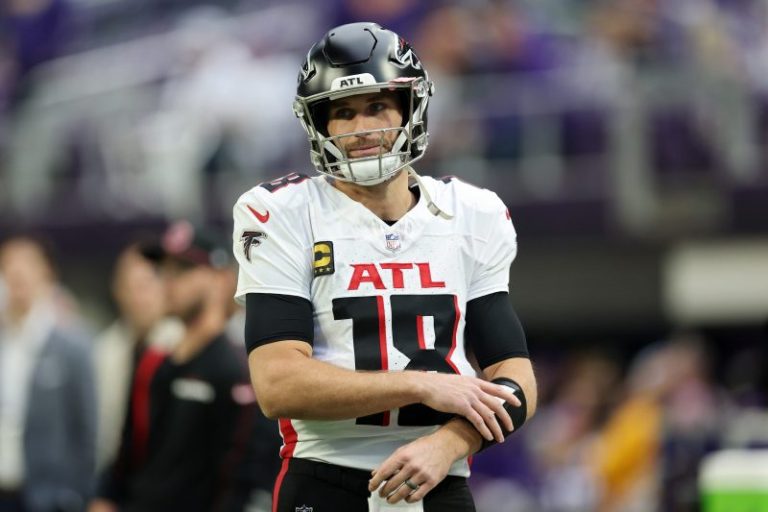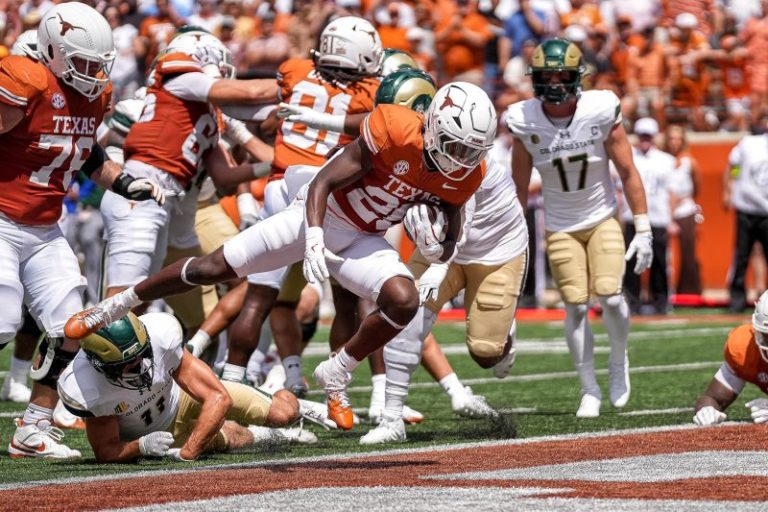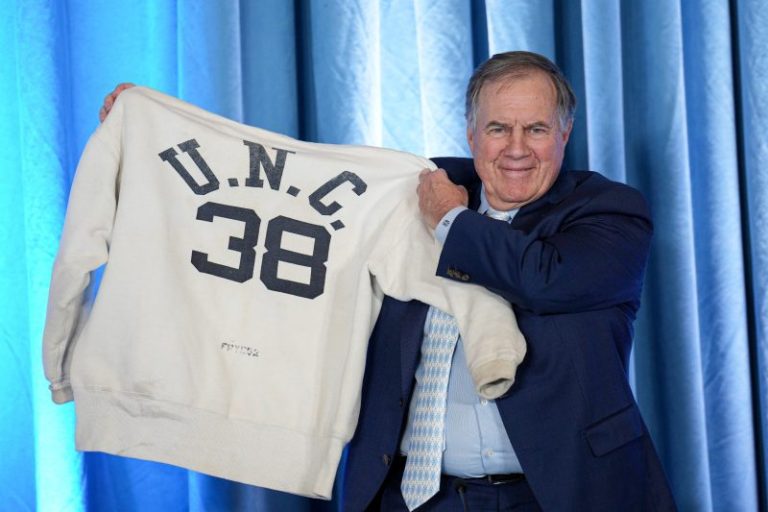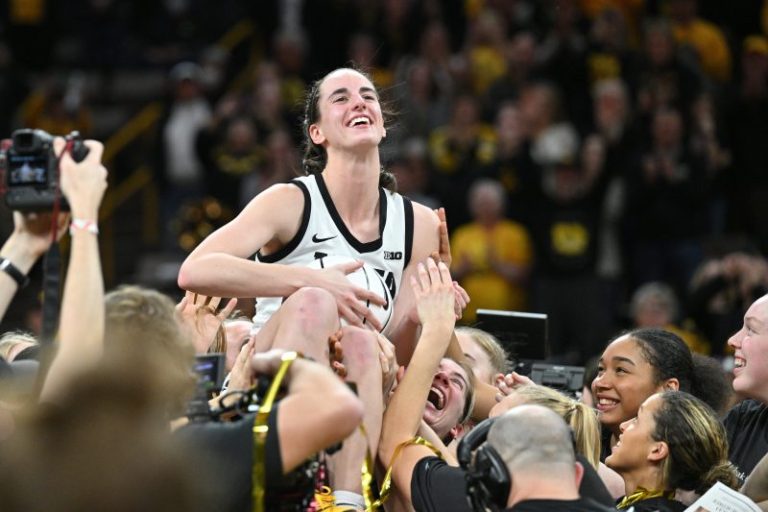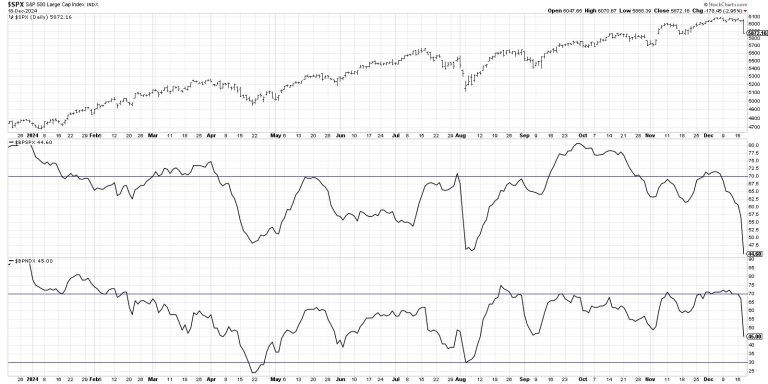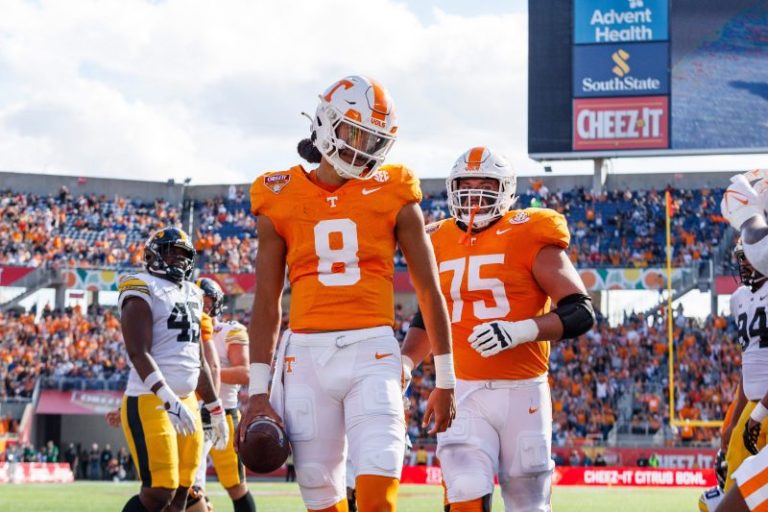Kirk Cousins’ descent might have started off slowly, but his demise with the Atlanta Falcons wrapped up in a hurry.
In a four-game losing streak that pushed the Falcons out of first place in the NFC South and to the fringe of the playoff picture, Cousins stood out as the pressing problem behind the team’s woes, throwing for eight interceptions while being held without a touchdown. Yet it wasn’t until Monday night’s 15-9 win over the Las Vegas Raiders, in which Cousins did not attempt a single pass on first down prior to halftime and was held to a season-low 112 yards, that things truly began to unravel. Falcons coach Raheem Morris, who had been steadfast in his support of his starter in the weeks prior, was noncommittal after the game about the team’s plan at quarterback.
‘We didn’t play well enough (at) the quarterback position, and we got to find ways to play better,’ Morris said.
Less than 24 hours later, the Falcons announced Cousins’ benching. Rookie first-round pick Michael Penix Jr. will take over for the remaining three games of the regular season.
The move marked a stunning potential beginning to the end of Cousins’ time in Atlanta, just nine months and 14 starts after he signed a four-year, $180 million contract. Brought aboard to elevate a talent-rich offense that appeared ready to make a significant leap, he instead proved to be one of the unit’s biggest limitations, throwing for an NFL-worst 16 interceptions.
NFL STATS CENTRAL: The latest NFL scores, schedules, odds, stats and more.
So, what’s next for Cousins?
Many signs seemingly point to a split sometime in the next three months, as an additional $10 million – he already is due $27.5 million for 2025 – will become guaranteed from Atlanta if he’s still on the roster by March 16. Facilitating a trade might entail paying down some of Cousins’ salary, and the veteran’s no-trade clause could be a substantial road block for the Falcons in figuring out a deal.
That all could indicate that Cousins’ first steps on his redemption arc could mirror those of Russell Wilson, whose release by the Denver Broncos in March entailed the largest dead cap hit ($85 million) in NFL history. (Cousins would spark a $65 million dead cap hit without a post-June 1 designation.) Wilson signed with the Pittsburgh Steelers before the start of free agency and, after taking over the starting role from Justin Fields in October once healthy, led the franchise to another playoff berth.
But regardless of how he is acquired, which teams might make sense as landing spots for Cousins in 2025? Here are the top 10 options, ranked on fit and need:
1. Cleveland Browns
Maybe what Cousins needs most to revive his career is a coach who understands his capabilities and still believes in him. If that’s the case, there’s likely no better destination for him than Cleveland. Browns coach Kevin Stefanski was Cousins’ offensive coordinator on the Minnesota Vikings in 2019, when the quarterback posted a career-best 107.4 passer rating and was selected to his second of four Pro Bowls. Cleveland remains financially committed to Deshaun Watson for two more years, but Cousins could be exactly the kind of low-cost option the team could embrace if it decides to cut its losses on one of the most ill-fated moves in NFL history. While Stefanski handed play-calling duties over to Ken Dorsey this season, Cousins would likely find plenty of comfort and familiarity in the offense. Hard to imagine a much better opportunity out there for the 13th-year veteran to get his footing back.
2. Tennessee Titans
The most direct route to a starting job for Cousins in 2025 might take him to Nashville. First-year coach Brian Callahan appears to have reached his breaking point with Will Levis, who was benched this week for Mason Rudolph. But barring a massive shake-up in the draft order, Tennessee could be frozen out of the chance to take either Colorado’s Shedeur Sanders or Miami’s Cam Ward in a draft class that lacks a clear third passing prospect worthy of a top-10 pick. Cousins’ turnovers might present some cause for concern given how frequently the offense has been undone by Levis’ giveaways, but even a little more stability for this unit could go a long way. Tennessee could install Cousins as the top option to start out and still take a flier on a signal-caller after the first round – the team is without its third-rounder after trading it to the Kansas City Chiefs in the L’Jarius Sneed deal – without overcommitting in its rebuild.
3. New York Giants
One way or another, the Falcons are sure to shape the Giants’ quarterback plan for next season. As the team to face Penix in his starting debut Sunday, New York will either extend its nine-game losing streak to continue on the path to a top-two draft pick or potentially fall back several slots in the tentative first-round order with a win. But even using a premium pick on a rookie passer might not preclude the Giants from considering Cousins. Though co-owner John Mara stated in October his intention to keep general manager Joe Schoen and coach Brian Daboll, the franchise could consider incorporating a bridge starter to provide a smooth handoff to its long-term answer behind center. In a thin market at the position, Cousins could be one of the more attractive options for such a role – if he’s willing to take it.
4. New York Jets
No point in trying to determine the Jets’ trajectory for next year, as the organization is essentially a blank slate with no one currently in line to make the first mark. With Aaron Rodgers seeming to be a long shot to return, according to multiple reports, Cousins could be a placeholder starter for the new regime, which might not be inclined to make a big swing on a rookie quarterback in a subpar class. Having Breece Hall, Garrett Wilson and Davante Adams – if Gang Green holds onto him – would provide some foundation for success, though Atlanta’s bevy of skill-position talent wasn’t enough to keep Cousins afloat this season. Still, there would no doubt be some grumbling about transitioning from a 41-year-old quarterback who showed ill effects of a torn Achilles to a 36-year-old quarterback who showed ill effects of a torn Achilles.
5. Indianapolis Colts
Would they? Could they? After the Matt Ryan saga, Chris Ballard would be roasted if he brought on another end-of-career quarterback from Atlanta. Yet for an organization that seems on track to run things back with Anthony Richardson for another year, adding a new veteran backup for insurance might be a necessity after Joe Flacco proved unfit for the job this season. Ballard and Shane Steichen’s potential hot-seat status in 2025, assuming they both return, could push them to at least consider the option.
6. Pittsburgh Steelers
With Wilson and Justin Fields both set to become free agents, the Cousins possibility can’t be fully ruled out just yet. But while Cousins might fit well in Arthur Smith’s play-action-heavy offense, the only real upside for Mike Tomlin here would be getting another year of an established signal-caller at an extreme discount rather than giving Wilson would could be sizable salary bump. The turnover factor also might make this a non-starter for Tomlin, especially without the big-play prowess that Wilson offers.
7. Carolina Panthers
Bryce Young has shown more than enough in recent weeks to restore faith in his standing as Carolina’s QB1 moving into next season. Still, Andy Dalton is a free agent, and having a starting-capable veteran backup is probably a must for Dave Canales’ staff. But it’s hard to say that Cousins is even a desirable contingency plan for a team like the Panthers at this point.
8. New Orleans Saints
Derek Carr’s fractured left hand left many to wonder whether the veteran quarterback has played his last snap in New Orleans. Should the Saints move on, however, handing the keys to Spencer Rattler would be a highly preferable move to bringing in an even older quarterback in decline.
9. Las Vegas Raiders
With a high likelihood of landing a top-two pick, a franchise that has been treading water the last two years with Jimmy Garoppolo, Aidan O’Connell and Gardner Minshew II can finally make a splash with a young quarterback. The Raiders should be prepared to endure the lows that come with playing a rookie, so there’s little justification to bring on someone like Cousins unless it’s purely in a mentor capacity.
10. San Francisco 49ers
It’s entirely reasonable to expect Kyle Shanahan and John Lynch to pursue some substantial changes this offseason following a massive letdown from last season’s Super Bowl run. Pivoting from Brock Purdy shouldn’t be one of them. The team has given every indication it is still preparing itself to hand over a potentially record-breaking extension, and the notion that the team would shift those plans merely to pursue a Shanahan reunion with Cousins seems extremely far-fetched.

